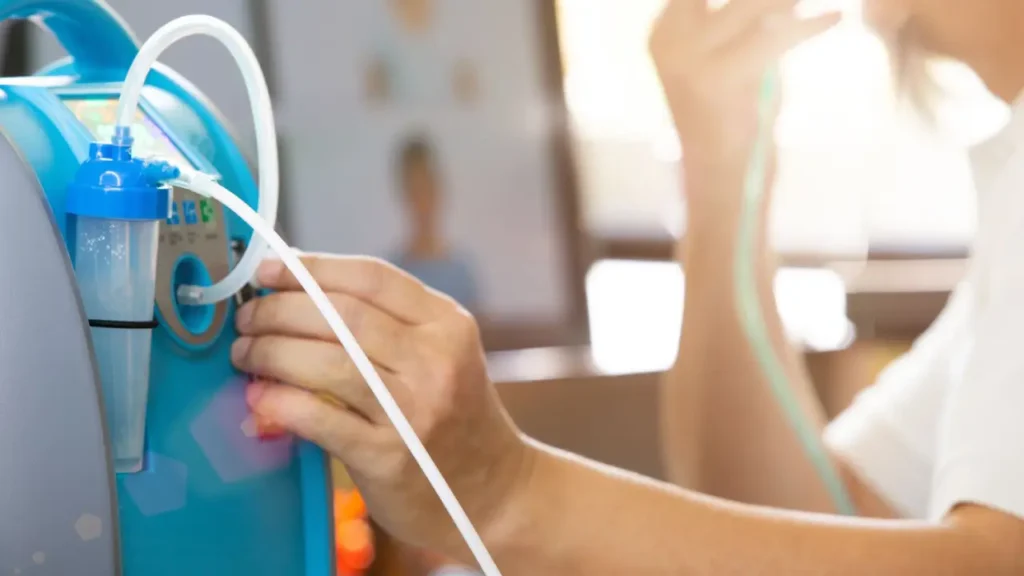Top 14 Airlines That Provide Inflight Oxygen or Portable Oxygen Concentrators (POCs)

Traveling with medical needs can be challenging, especially when it involves flying. For travelers requiring supplemental oxygen in particular, it is important to know which airlines provide relevant in-flight medical services. Generally, all the major airlines provide in-flight oxygen, whether operating domestically or internationally. These airlines include British Airways, Emirates, Air Canada, etc. Those with respiratory conditions can plan their journeys with such carriers. Beyond providing in-flight oxygen, carriers in the USA, United Kingdom, and other locations can provide additional medical facilities or allow fliers to carry their devices. For convenient travel, some of them can make POCs or Portable Oxygen Concentrators available as well.
Which Airlines Provide In-Flight Oxygen or Portable Oxygen Concentrators (POCs)?
There are several airlines that provide or allow in-flight oxygen services. Delta, American, United, etc., are among the top carriers to prefer to meet this medical requirement.
1. Delta Air Lines
At present, Delta Air Lines has ceased offering compressed medical oxygen. Instead, it permits passengers to bring FAA-approved Portable Oxygen Concentrators (POCs) with 48 hours’ prior notice. Passengers must ensure their POCs meet Delta’s requirements, including sufficient battery life and proper packaging.
2. American Airlines
Importantly, American Airlines allows flyers to travel with FAA-approved POCs. Before flying, flyers must check in at the gate to verify their device’s compliance and demonstrate their ability to operate it. The carrier requires flyers to have a battery supply that lasts at least 150% of the flight duration, including potential delays.
3. United Airlines
On specific routes, United Airlines provides in-flight oxygen. On flights between Guam and Palau, Marshall Islands, Honolulu, Micronesia, and Manila, one can find this facility. For other flights, passengers must use their personal oxygen supplier devices. A 48-hour advance notice is required, and there is a fee per flight segment for the oxygen setup.
4. Southwest Airlines
In the United States, Southwest Airlines permits travelers to use their FAA-approved Portable Oxygen Concentrators (POCs) during flights, provided they are in battery-operated mode. Passengers must ensure they have enough fully charged batteries, covering at least 150% of the expected maximum flight duration.
5. Virgin Atlantic
Essentially, Virgin Atlantic accommodates passengers who require oxygen during their flights. They can bring their own FAA-approved POCs as part of their hand luggage. They need to complete the POC and Battery Approval Request form and send it to the airline’s oxygen provider (OxygenToGo) at least 48 hours before flying if they plan to use the device onboard.
6. British Airways
One of the airlines that provides in-flight oxygen is British Airways. It provides therapeutic oxygen to only one individual needing this service during a flight. So, a flyer needs to book this service in advance. To check the availability, contact the Medical Clearance unit of this carrier.
7. Lufthansa
For those with specific medical needs, Lufthansa offers a limited extra oxygen supply onboard. A traveler must contact the Lufthansa Medical Operation Centre around 48 hours before departure to arrange for an oxygen supply. Note that it is subject to a fee.
8. Emirates
Currently, Emirates provides therapeutic oxygen onboard at no extra charge. But one must complete a medical form at least 48 hours before the flight to specify the required flow rate.
For those traveling with their own POC, Emirates allows FAA-approved devices without the need for a medical form. However, fliers need to ensure that they have sufficient battery power for the entire journey, as in-seat power is not available.
9. Air France
Although for a fee, Air France is an airline that provides in-flight oxygen (therapeutic). It must be requested at least forty-eight hours before departure. The service may not be available from all airports or on all flights. However, Air France provides a specially designed kit for air travel, which functions on demand.
10. Air Canada
With Air Canada, one can either bring one’s POC or purchase the Medipak oxygen service. This service requires medical approval and must be arranged 48 hours prior to departure. The fees for Medipak oxygen vary depending on the flight route.
- For flights within Canada, the Medipak charges are $17 CAD/USD.
- The cost for all other flight routes is between $220 and $1070 CAD/USD.
11. Qantas
Flyers who require oxygen are accommodated by Qantas. It does so either by allowing them to bring their own cylinders or by offering Qantas-supplied cylinders for a fee of $110.
- Though this airline provides in-flight oxygen, it must be booked in advance.
- The specific criteria to reserve the facility must be met, especially for international flights.
12. Singapore Airlines
In accordance with the Federal Aviation Administration (FAA), Singapore Airlines permits the use of certain POC devices and CPAP machines onboard. Flyers must ensure their devices fit under the seat in front of them and have sufficient battery power for 150% of the flight duration.
13. Korean Air
Though not for free, Korean Air gives medical oxygen. It must be reserved in advance. Passengers using assistive breathing devices should contact the Service Center at least 48 hours prior to the scheduled take-off time to ensure compliance with safety regulations.
14. Cathay Pacific
For therapeutic or medical purposes, Cathay Pacific Airlines provides in-flight oxygen, available upon request at least 72 hours before the flight takes off. The availability and flow rate of oxygen must be confirmed with the reservations office.
Also Read:
- How Airlines Schedule Flights & Which Factors are Considered?
- What is the Meaning of TSA PreCheck Eligibility Determined?
- Can You Claim for Damaged Luggage with an Airline, and What is the Procedure?
Conclusion
Travelers requiring oxygen can fly safely and comfortably by knowing the best airlines that meet their medical needs. At the same time, understanding the in-flight oxygen policies of airlines is essential in order to avail of the service as and when required.